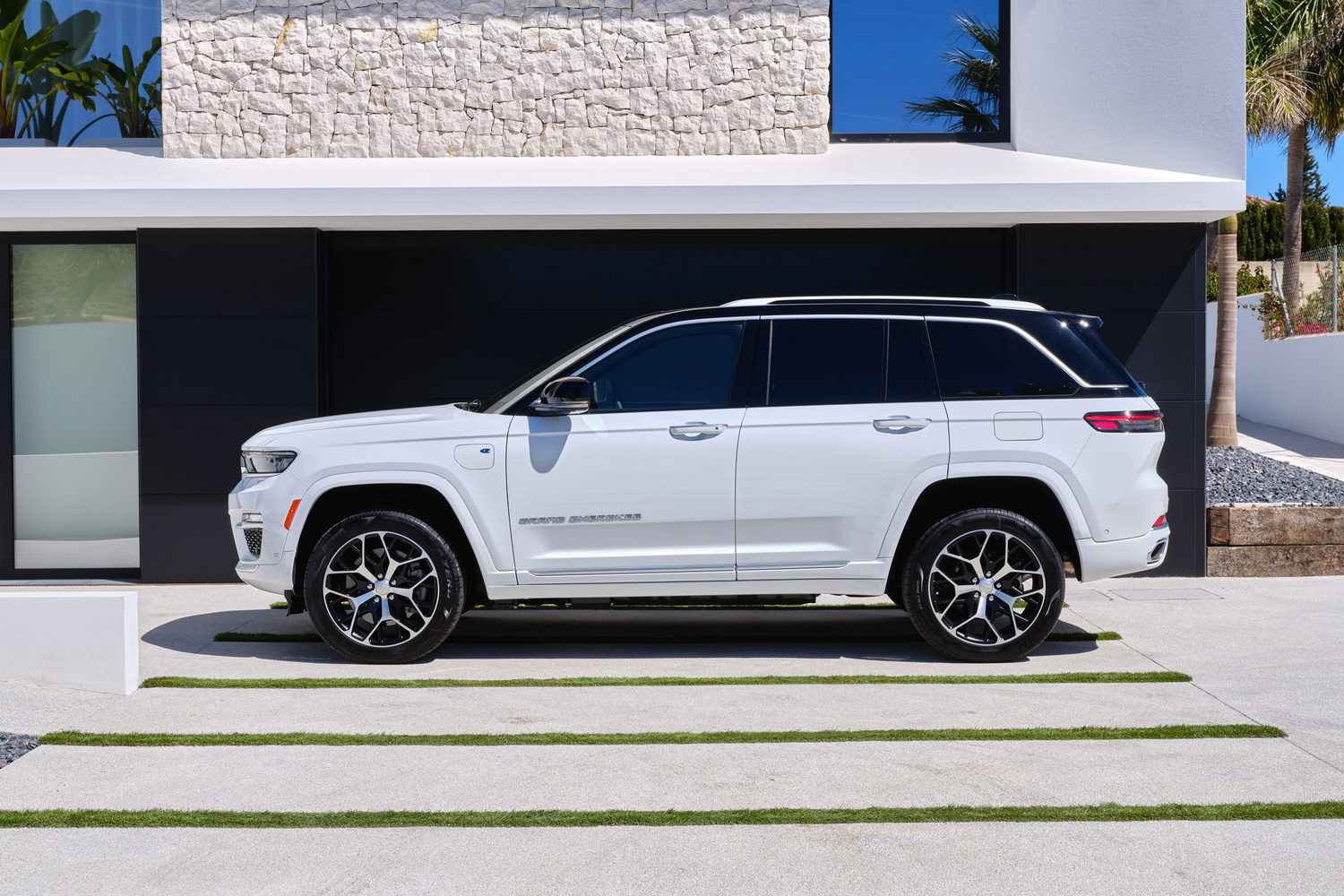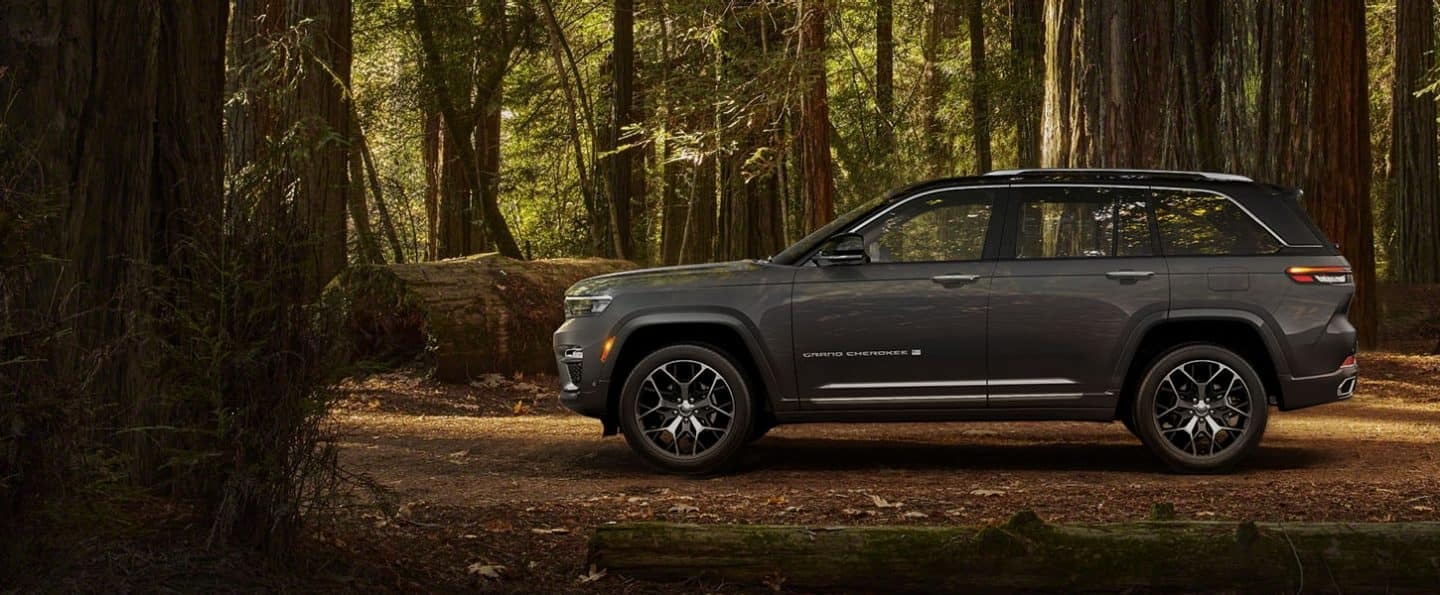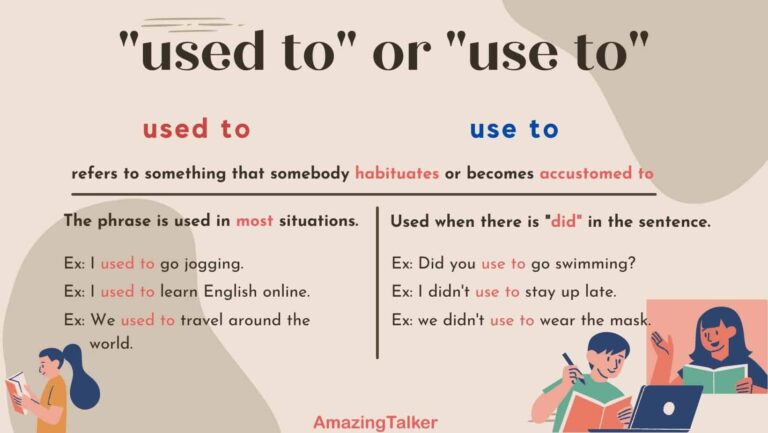Jeep Cherokee Car Lease: Your Comprehensive Guide to Driving America’s Iconic SUV
Jeep Cherokee Car Lease: Your Comprehensive Guide to Driving America’s Iconic SUV jeeps.truckstrend.com
The open road beckons, and for many, the call is best answered from behind the wheel of a versatile, capable, and stylish SUV. The Jeep Cherokee stands as a prominent figure in this segment, blending legendary Jeep capability with modern comfort and technology. While purchasing a new vehicle outright or through traditional financing is common, car leasing presents an increasingly popular alternative, offering unique benefits for those who desire flexibility, lower monthly payments, and the thrill of driving a new car more frequently.
This comprehensive guide will delve into the intricacies of a Jeep Cherokee car lease, illuminating its various facets from the foundational concepts to practical tips for securing the best deal. Whether you’re a first-time leaser or looking to refresh your understanding, this article aims to equip you with all the knowledge necessary to make an informed decision about leasing your next Jeep Cherokee.
Jeep Cherokee Car Lease: Your Comprehensive Guide to Driving America’s Iconic SUV
Why Lease a Jeep Cherokee? Understanding the Benefits
Leasing a Jeep Cherokee isn’t just about driving a new vehicle; it’s about aligning your automotive needs with a financial strategy that offers distinct advantages over traditional car ownership.
- Lower Monthly Payments: One of the most compelling reasons to lease is the significantly lower monthly payment compared to purchasing the same vehicle with a loan. When you lease, you’re essentially paying for the depreciation of the vehicle over the lease term, plus interest and fees, rather than the entire purchase price.
- Drive a New Car More Often: Lease terms typically range from 24 to 48 months. This means you can upgrade to a brand-new Jeep Cherokee, or another model entirely, every few years, enjoying the latest technology, safety features, and design without the hassle of selling your old vehicle.
- Warranty Coverage & Reduced Maintenance Costs: Most lease terms align with the manufacturer’s bumper-to-bumper warranty. This means that for the majority, if not all, of your lease period, any significant mechanical issues will be covered by the warranty, saving you from unexpected repair bills. Routine maintenance might still be your responsibility, but major costs are usually avoided.
- Predictable Costs: Leasing often involves a fixed monthly payment, making it easier to budget your expenses. Beyond fuel and insurance, your primary vehicle cost is consistent.
- Flexibility at Lease End: At the end of your lease, you have several options: return the vehicle, buy it out, or lease a new one. This flexibility allows you to adapt to changing life circumstances or preferences without being tied down to a long-term asset.
- Potential Tax Advantages (for Businesses): For businesses, leasing a vehicle like the Jeep Cherokee can offer tax deductions, as lease payments may be considered an operating expense. Consult a tax professional for specific advice.

Key Components of a Jeep Cherokee Lease Agreement

Understanding the terminology and financial elements within a lease agreement is crucial before signing on the dotted line.
- Capitalized Cost (Cap Cost): This is essentially the negotiated selling price of the vehicle. It’s the starting point for calculating your lease payments. A lower cap cost directly translates to lower monthly payments.
- Residual Value: This is the projected value of the Jeep Cherokee at the end of the lease term, expressed as a percentage of the MSRP. The higher the residual value, the lower your depreciation amount, and thus, lower monthly payments. Manufacturers and leasing companies determine this value based on anticipated market depreciation.
- Money Factor: Often expressed as a very small decimal (e.g., 0.00250), the money factor is the equivalent of an interest rate on a car loan. To convert it to an approximate annual percentage rate (APR), multiply it by 2400 (e.g., 0.00250 x 2400 = 6% APR). A lower money factor means less interest paid.
- Lease Term: This is the duration of your lease agreement, typically measured in months (e.g., 24, 36, 48 months). Shorter terms often mean higher monthly payments due to faster depreciation, while longer terms can mean lower payments but less frequent new cars.
- Mileage Allowance: Leases come with an annual mileage limit (e.g., 10,000, 12,000, or 15,000 miles per year). Exceeding this limit results in per-mile overage charges (e.g., $0.20-$0.25 per mile), which can add up significantly. It’s crucial to choose a mileage allowance that accurately reflects your driving habits.
- Acquisition Fee: A fee charged by the leasing company for setting up the lease. It’s often rolled into the lease payments or paid upfront.
- Disposition Fee: A fee charged at the end of the lease when you return the vehicle. This covers the cost of preparing the vehicle for resale.
- Taxes and Fees: Sales tax on the lease payments, registration fees, license plates, and other governmental charges will also be part of your total cost.

The Jeep Cherokee Lease Process: A Step-by-Step Guide
Leasing a Jeep Cherokee can be a straightforward process if you know what to expect.
- Research and Budgeting: Determine which Jeep Cherokee trim (Latitude, Altitude, Limited, Trailhawk, etc.) best suits your needs and budget. Research average lease payments for those trims in your area.
- Choose Your Trim and Features: Decide on the specific model, engine, features, and color you desire. This will influence the MSRP and, consequently, the lease cost.
- Negotiating the Price (Capitalized Cost): Treat the capitalized cost as if you were buying the car. Dealers are often willing to negotiate this figure, which directly impacts your monthly payment. Don’t focus solely on the monthly payment; a low monthly payment might hide a high cap cost or inflated money factor.
- Understanding Lease Terms: Once the cap cost is set, delve into the other variables: the money factor, residual value, and lease term. Ask for these numbers explicitly.
- Getting Quotes from Multiple Dealers: Contact several Jeep dealerships to compare lease offers on the exact same vehicle configuration. This competition can lead to better deals.
- Credit Check and Approval: The leasing company will perform a credit check. A strong credit score (typically 700+) will qualify you for the best money factors.
- Reviewing the Lease Agreement Thoroughly: Before signing, meticulously read every line of the lease contract. Ensure all negotiated terms (cap cost, money factor, residual, mileage, fees) are accurately reflected. Ask questions about anything you don’t understand.
- Taking Delivery: Once the paperwork is complete, you can drive off in your new Jeep Cherokee!
Navigating Lease End Options for Your Jeep Cherokee
As your lease approaches its end, typically 90 days out, you’ll need to consider your options.
- Returning the Vehicle: This is the most common option. Schedule a pre-inspection (usually free) to identify any excessive wear and tear or mileage overages. Address minor issues to avoid charges. Return the vehicle to the dealership on or before the lease end date, pay any remaining fees (disposition fee, overage charges), and walk away.
- Buying Out the Lease: If you love your Jeep Cherokee and the residual value is favorable (i.e., the market value is higher than the residual), you can purchase the vehicle. You’ll pay the residual value plus any applicable sales tax and fees. You can finance this amount like a traditional car purchase.
- Leasing a New Jeep Cherokee: Many lessees choose to upgrade to the latest model. The dealership might waive your disposition fee or offer other incentives to keep you as a customer.
- Extending the Lease: In some cases, you might be able to extend your current lease for a few months or a year. This can be a good option if you need more time to decide on your next vehicle or if a new model release is imminent.
- Pre-Inspection and Wear & Tear: Before returning the car, arrange a pre-inspection. This helps you identify potential charges for "excessive wear and tear" (e.g., large dents, deep scratches, cracked windshields, heavily stained interiors) beyond normal use. Addressing these issues beforehand can be cheaper than paying the leasing company’s charges.
Tips for Securing the Best Jeep Cherokee Lease Deal
Optimizing your lease deal requires diligence and negotiation.
- Know Your Credit Score: A higher credit score (Tier 1) gives you access to the lowest money factors.
- Shop Around: Get quotes from at least three different dealerships. Pit them against each other (politely) to encourage competitive offers.
- Negotiate the Capitalized Cost: This is your primary leverage. Aim for a price that is close to or below the invoice price, just as you would when buying.
- Understand the Money Factor: Don’t let dealers obscure this. Ask for it explicitly. If it seems high, ask if they can lower it or compare it with other offers.
- Consider Different Lease Terms/Mileage Allowances: Sometimes, a slightly longer term (e.g., 39 months instead of 36) can significantly lower payments due to different residual value calculations. Also, be realistic about your annual mileage needs; paying for miles you don’t use is wasteful.
- Look for Special Lease Offers: Manufacturers frequently offer incentives like reduced money factors, higher residual values, or lease cash to move specific models. Check manufacturer websites and local dealer promotions.
- Trade-In Considerations: If you have a trade-in, negotiate its value separately. You can use its equity to lower the capitalized cost (known as a "cap cost reduction"), thereby reducing your monthly payments.
Potential Challenges and How to Address Them
While leasing offers many advantages, it’s essential to be aware of potential pitfalls.
- Excessive Wear and Tear Charges: The definition of "normal" vs. "excessive" wear and tear can sometimes be subjective. Get a pre-inspection and address any issues proactively. Keep the vehicle well-maintained throughout the lease.
- Exceeding Mileage Limits: Going over your allotted miles can be costly (e.g., $0.20-$0.25 per mile). If you anticipate exceeding your limit, consider purchasing additional miles upfront (often cheaper) or buying out the lease at the end.
- Early Lease Termination: Breaking a lease early can be very expensive, as you’re typically responsible for the remaining payments, fees, and the difference between the payoff amount and the vehicle’s current market value. Explore options like lease transfers (if allowed by the leasing company) or negotiating with the dealer.
- Insurance Requirements: Leasing companies typically require higher insurance coverage (e.g., higher liability limits, comprehensive, and collision with lower deductibles) than you might otherwise choose. Factor these costs into your budget.
- Maintenance Responsibilities: While major repairs are often covered by warranty, routine maintenance (oil changes, tire rotations, brake pads, etc.) is generally your responsibility. Adhere to the manufacturer’s recommended service schedule to avoid potential issues or charges at lease end.
Which Jeep Cherokee Trim is Right for Leasing?
The Jeep Cherokee offers a range of trims, each impacting the capitalized cost and, therefore, your lease payment.
- Latitude / Latitude Plus / Altitude: These are typically the entry-level and mid-range trims, offering good value and a balance of features. They often have the lowest MSRP, leading to potentially lower monthly lease payments.
- Limited: A more premium trim with enhanced features, comfort, and technology. The higher MSRP will result in higher lease payments, but the added amenities might be worth it for some.
- Trailhawk: Designed for off-road enthusiasts, the Trailhawk boasts superior 4×4 capability, unique styling, and specialized features. Its higher MSRP and specialized nature might mean slightly higher lease payments, but its strong residual value could sometimes offset this.
When choosing a trim, consider not just the upfront MSRP, but also the residual value. Trims that hold their value well (like the Trailhawk) might have a higher MSRP but a proportionally lower depreciation cost over the lease term, leading to competitive monthly payments.
Example Jeep Cherokee Car Lease Price Table (Illustrative)
Please Note: The figures below are purely illustrative examples for a hypothetical scenario and do not represent actual, current market lease rates. Lease prices fluctuate significantly based on manufacturer incentives, regional offers, dealer negotiations, credit score, and market conditions.
| Jeep Cherokee Trim | Example MSRP | Example Down Payment | Example Monthly Payment (36 months) | Example Mileage Allowance | Example Residual Value (at 36 months) |
|---|---|---|---|---|---|
| Latitude | $32,000 | $2,500 | $349 | 10,000 miles/year | $18,500 (57.8% of MSRP) |
| Altitude | $34,500 | $2,500 | $389 | 10,000 miles/year | $19,800 (57.4% of MSRP) |
| Limited | $38,000 | $3,000 | $449 | 12,000 miles/year | $21,600 (56.8% of MSRP) |
| Trailhawk | $42,000 | $3,500 | $499 | 12,000 miles/year | $24,500 (58.3% of MSRP) |
Assumptions for the above table:
- Excellent Credit Score (Tier 1)
- Money Factor: Equivalent to ~4.5% APR (0.001875)
- Excludes local taxes, registration fees, acquisition fees, and disposition fees. These would add to the total cost.
- Monthly payment calculated based on the difference between Cap Cost (MSRP – Down Payment) and Residual Value, plus money factor charges.
Frequently Asked Questions (FAQ) about Jeep Cherokee Car Lease
Q1: Is leasing a Jeep Cherokee cheaper than buying one?
A1: Monthly payments for a lease are typically lower than for a traditional loan on the same vehicle. However, over the long term, if you continuously lease new vehicles, you might pay more than if you bought and kept a car for many years. Leasing is about accessing a new vehicle more frequently for lower monthly outlay, not necessarily long-term cost savings.
Q2: Can I negotiate the lease price of a Jeep Cherokee?
A2: Absolutely. You can (and should) negotiate the capitalized cost (the selling price) of the vehicle, just as you would if you were buying it. This is the most impactful variable on your monthly payment. You can also try to negotiate the money factor or ask about special incentives.
Q3: What happens if I go over my mileage limit?
A3: You will be charged an overage fee for every mile exceeding your allowance. This fee can range from $0.15 to $0.30 per mile. It’s crucial to estimate your annual mileage accurately before signing the lease to avoid these potentially high charges.
Q4: What is "excessive wear and tear"?
A4: "Excessive wear and tear" refers to damage beyond normal use, such as large dents, deep scratches, cracked windshields, torn upholstery, or bald tires. Minor dings and normal interior wear are usually acceptable. Most leasing companies offer a "wear and tear guide" or conduct a pre-inspection to clarify.
Q5: Can I get out of a Jeep Cherokee lease early?
A5: It’s generally expensive to terminate a lease early. You may be responsible for the remaining payments, early termination fees, and the difference between the vehicle’s market value and your lease payoff amount. Some options include lease transfers (if allowed by the leasing company) or negotiating with the dealer.
Q6: Do I need a down payment for a lease?
A6: While a down payment (or "cap cost reduction") will lower your monthly payments, it’s not always required. Many leases can be structured with "zero down." However, it’s often advisable to put down minimal or no money upfront, as you risk losing that money if the vehicle is totaled early in the lease.
Q7: What credit score do I need to lease a Jeep Cherokee?
A7: A good to excellent credit score (typically 700 FICO or above) is generally required to qualify for the best lease rates (lowest money factor). Lower scores may still get approved but with higher money factors, increasing your monthly payments.
Conclusion
Leasing a Jeep Cherokee offers a compelling pathway to experience the blend of rugged capability and modern refinement that this iconic SUV provides. With lower monthly payments, the ability to drive a new vehicle every few years, and the peace of mind of warranty coverage, it’s an attractive option for many drivers.
However, a successful lease experience hinges on thorough research, understanding the key components of the lease agreement, and diligent negotiation. By knowing your financial limits, comparing offers from multiple dealerships, and carefully reviewing all terms, you can unlock the full potential of a Jeep Cherokee car lease. Ultimately, whether leasing is the right choice for you depends on your driving habits, financial goals, and desire for flexibility in your automotive journey.




